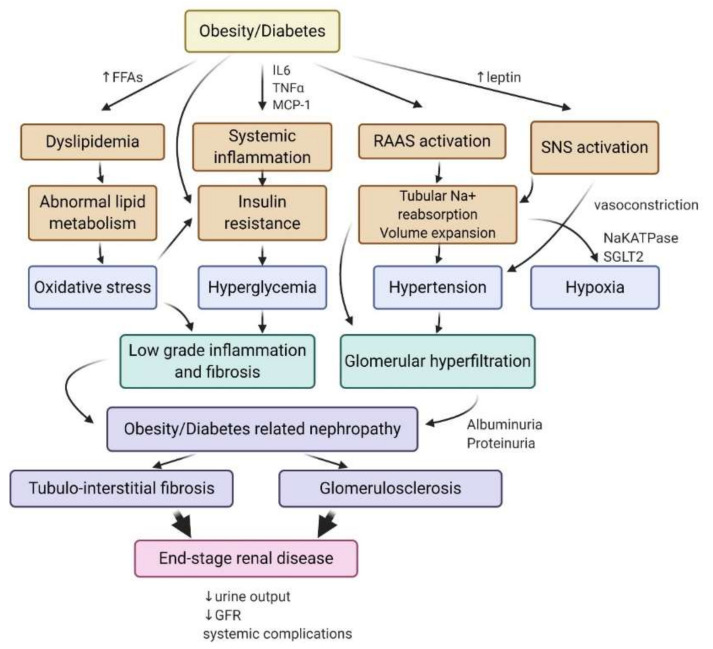Figure 1.
Mechanisms involved in the pathogenesis of diabetes- and obesity-related kidney disease and ultimately end-stage renal disease. Obesity and diabetes initiate systemic disturbances, including systemic inflammation, dyslipidemia, the activation of the SNS, and RAAS that contribute to intrarenal stresses resulting from abnormal lipid metabolism, insulin resistance, and tubular reabsorption of sodium. Hypertension and the associated glomerular hyperfiltration increase albuminuria. Renal oxidative stress and hyperglycemia lead to inflammation and fibrosis that initiate obesity- and diabetes-related nephropathy. Tubulo-interstitial fibrosis and glomerulosclerosis are associated with a progressive decline in the glomerular filtration rate (GFR), loss of nephrons, and ultimately end-stage renal disease. IL6, interleukin 6; TNFα, tumor necrosis factor-α; MCP-1, monocyte chemoattractant protein-1; FFAs, free fatty acids; Na+-K+ ATPase, sodium–potassium pump; SGLT2, sodium/glucose cotransporter 2; SNS, sympathetic nervous system; GFR, glomerular filtration rate; RAAS, renin–angiotensin–aldosterone system.

